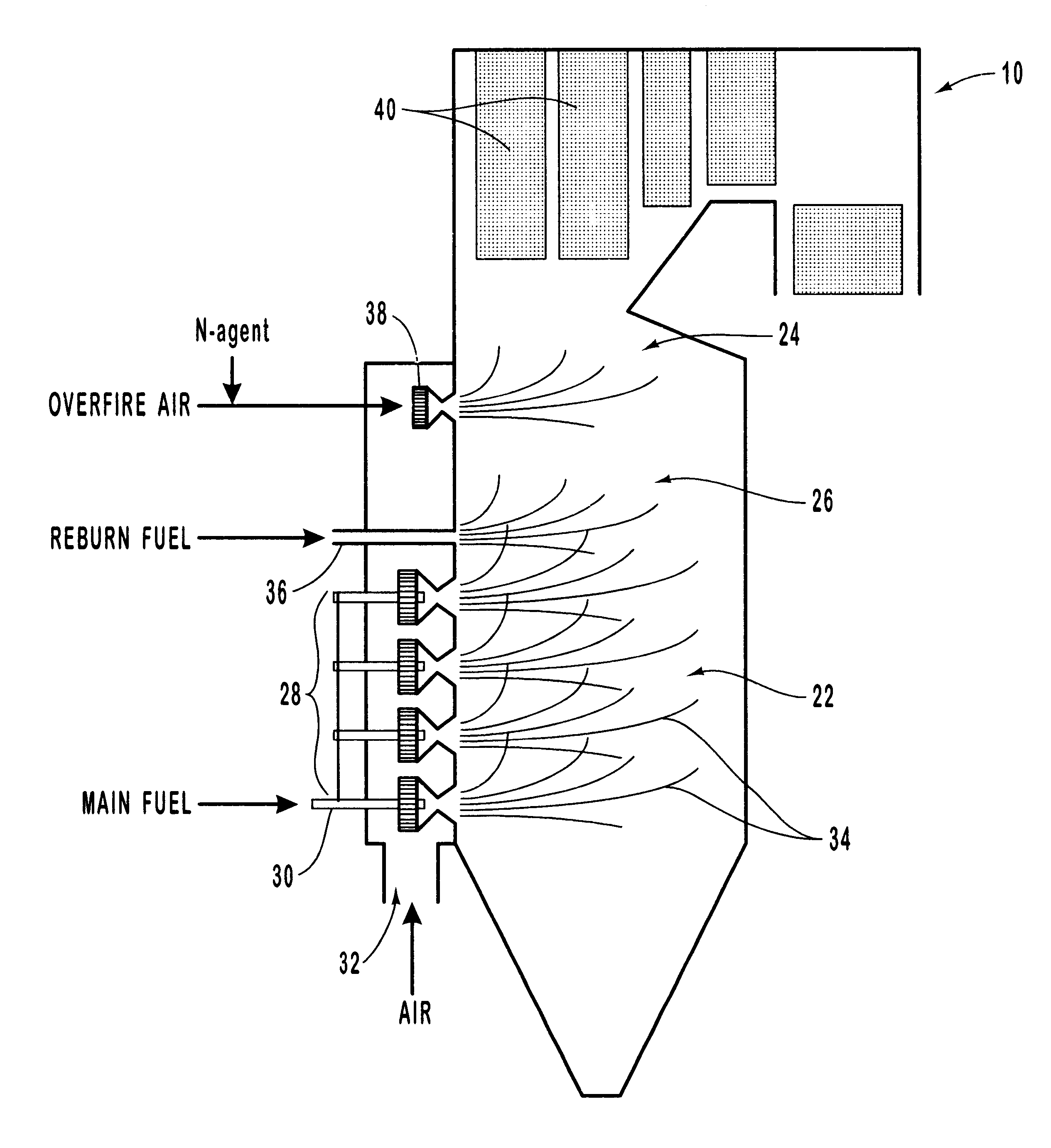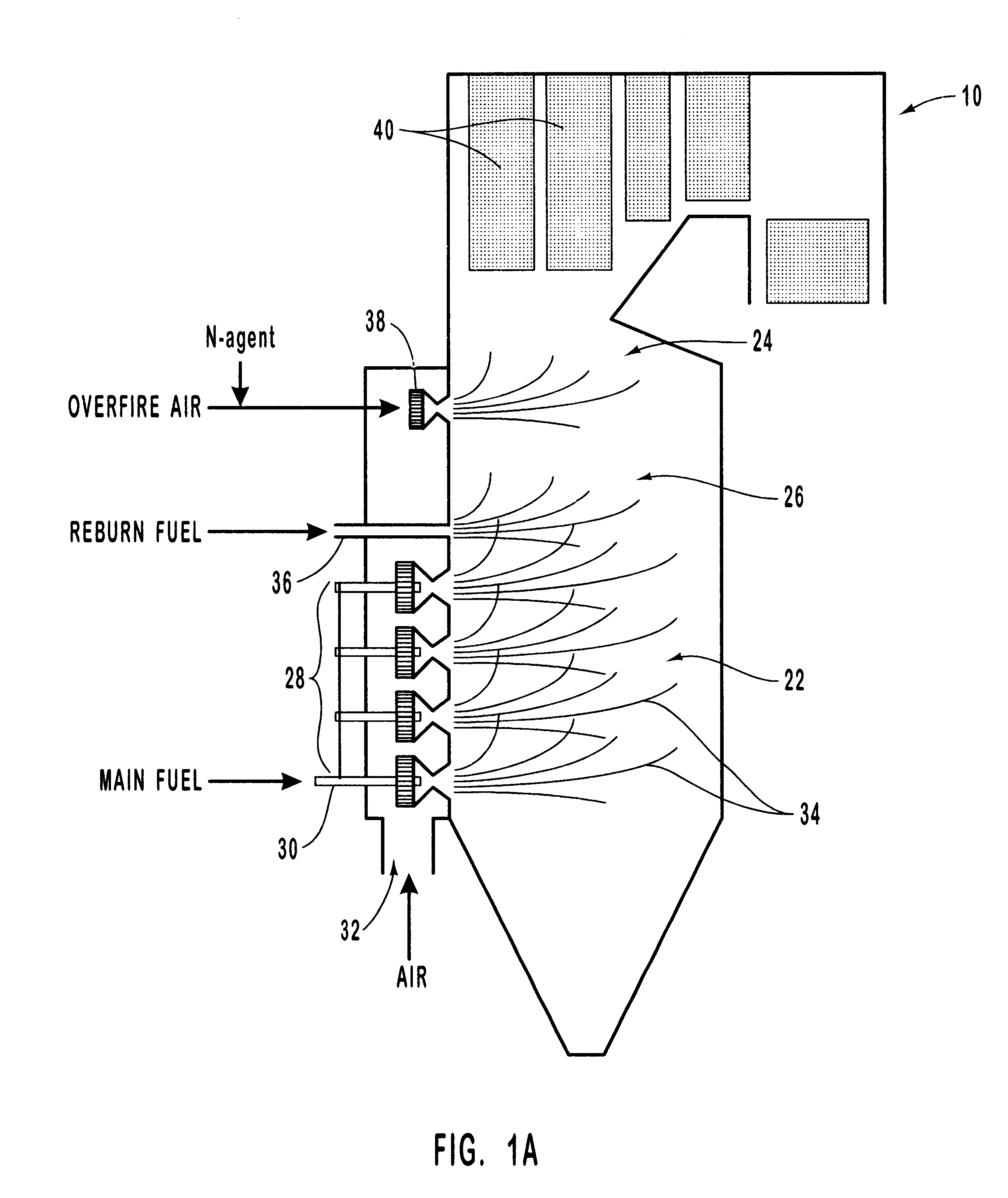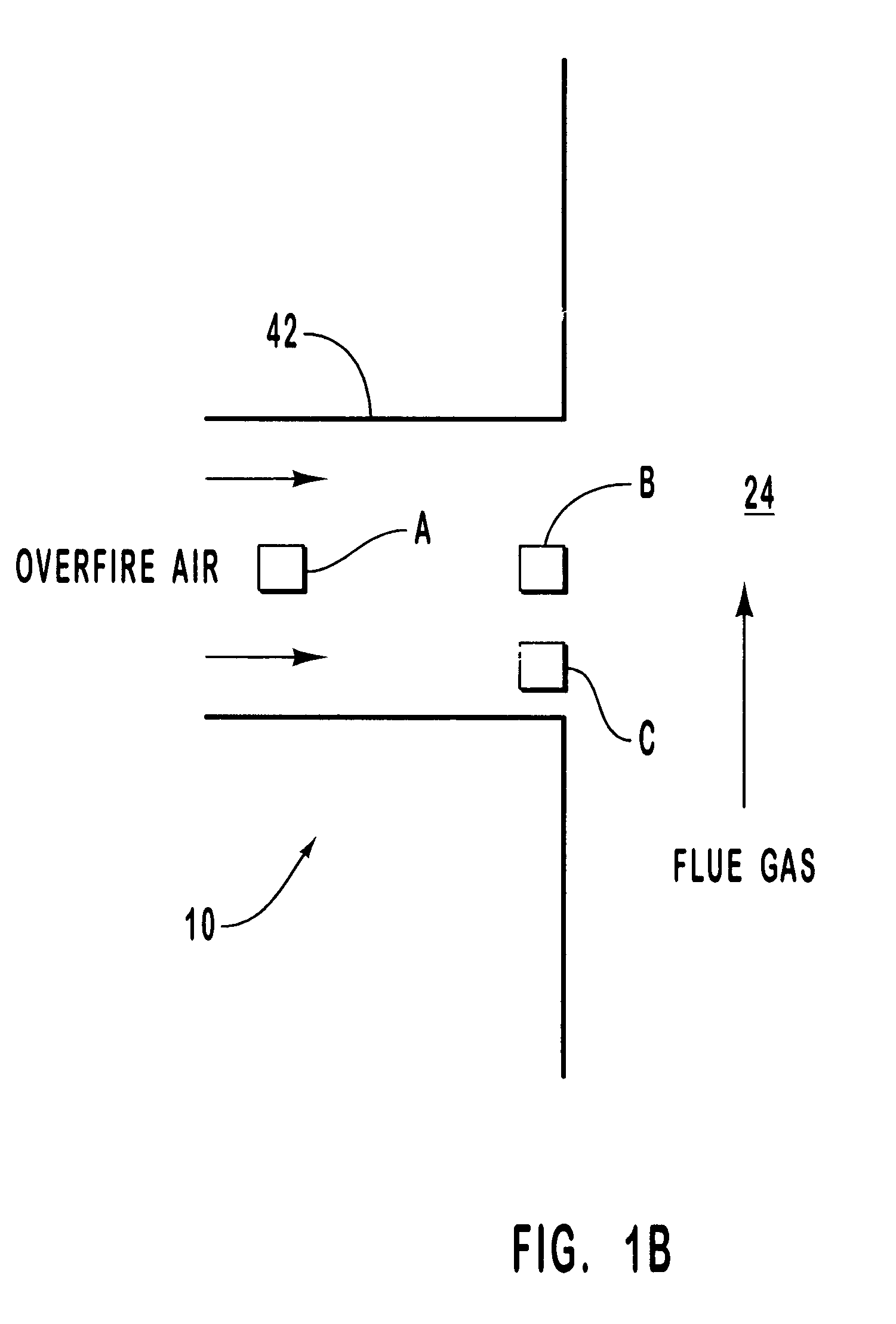Method of reducing NOx in a combustion flue gas
- Summary
- Abstract
- Description
- Claims
- Application Information
AI Technical Summary
Benefits of technology
Problems solved by technology
Method used
Image
Examples
example 1
Urea was injected with overfire air at a concentration ratio of 1.5, the concentration ratio (hereinafter "NSR") being defined as the ratio of moles of atoms of nitrogen in the selective reducing agent to moles of atoms of nitrogen in the nitrogen oxide. FIG. 4 compares the observed experimental values for NO.sub.x reduction (open and filled circles) to modeled values, as a function of temperature, for two different reburning fuel input amounts. The open circles plot observed values for a 2% reburn fuel input, and curve 80 shows the corresponding modeling result. Similarly, the filled circles plot observed values for a 10% reburn fuel input, and curve 82 shows the corresponding modeling result. Rapid NO / urea mixing (i.e., small urea droplet size) was assumed.
The graph of FIG. 4 demonstrates that the computer model describes the main features of the inventive process. At small reburning fuel heat inputs (open circles, and curve 80), the dependence of the process efficiency on the OFA...
example 2
The experimental and modeling experiments of Example 1 were repeated, this time holding the temperature fixed at 1800.degree. F. and varying the reburning fuel input. The results are shown in the graph of FIG. 5. The circles on the graph show observed experimental results, and curve 84 shows the modeling prediction. The graph of FIG. 5 generally shows good agreement between modeling predictions and experimental data for injection of urea with the OFA at an OFA injection temperature of 1800.degree. F. For less than 6% reburning fuel, the efficiency of NO.sub.x reduction is about 90-94%, and is insensitive to the amount of the reburning fuel. NO.sub.x reduction for these conditions is high due to rapid NO / N-agent mixing. As the amount of the reburning fuel increases, the efficiency of the process decreases.
Comparison of modeling predictions with experimental data for other conditions further confirmed that the process model gave a realistic description of experimental data. This confi...
example 3
The graph of FIG. 6 shows the effect of droplet evaporation time on NO.sub.x reduction by urea at an OFA / urea injection temperature of 2200.degree. F., for a 10% reburning fuel input and an NSR of 1.5. As the evaporation time increases, the efficiency of the process also increases. At longer evaporation times, corresponding to larger droplets, the dependence on evaporation time becomes less prominent, since at 2200.degree. F. most CO is oxidized within the first 200 ms. Thus, longer droplet evaporation time (or larger droplet size) provides the best NO.sub.x reduction. This example illustrates the advantage of using a system in which the evaporation time or droplet size may be adjusted so as to provide the optimum NO.sub.x reduction.
PUM
 Login to View More
Login to View More Abstract
Description
Claims
Application Information
 Login to View More
Login to View More - R&D
- Intellectual Property
- Life Sciences
- Materials
- Tech Scout
- Unparalleled Data Quality
- Higher Quality Content
- 60% Fewer Hallucinations
Browse by: Latest US Patents, China's latest patents, Technical Efficacy Thesaurus, Application Domain, Technology Topic, Popular Technical Reports.
© 2025 PatSnap. All rights reserved.Legal|Privacy policy|Modern Slavery Act Transparency Statement|Sitemap|About US| Contact US: help@patsnap.com



